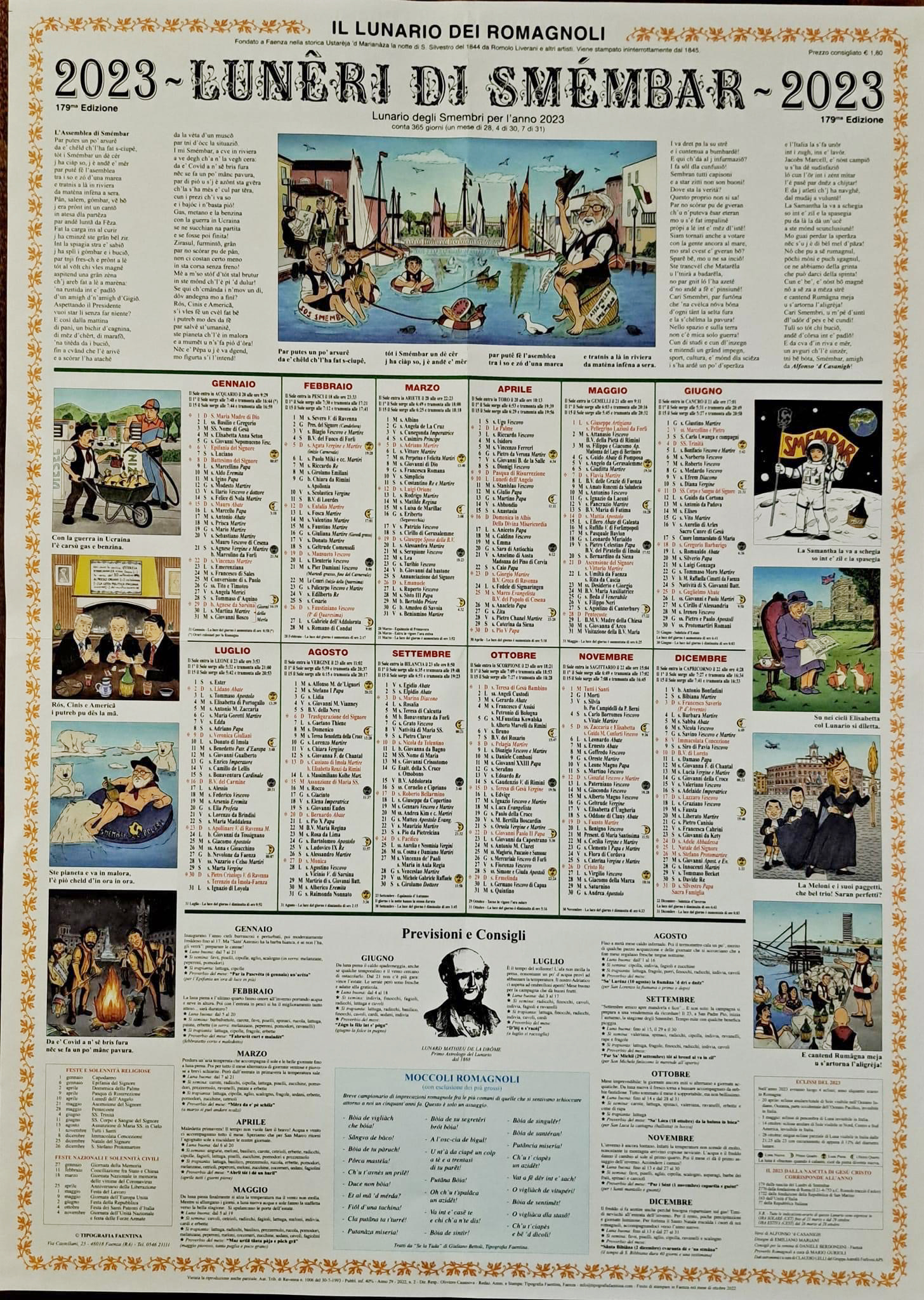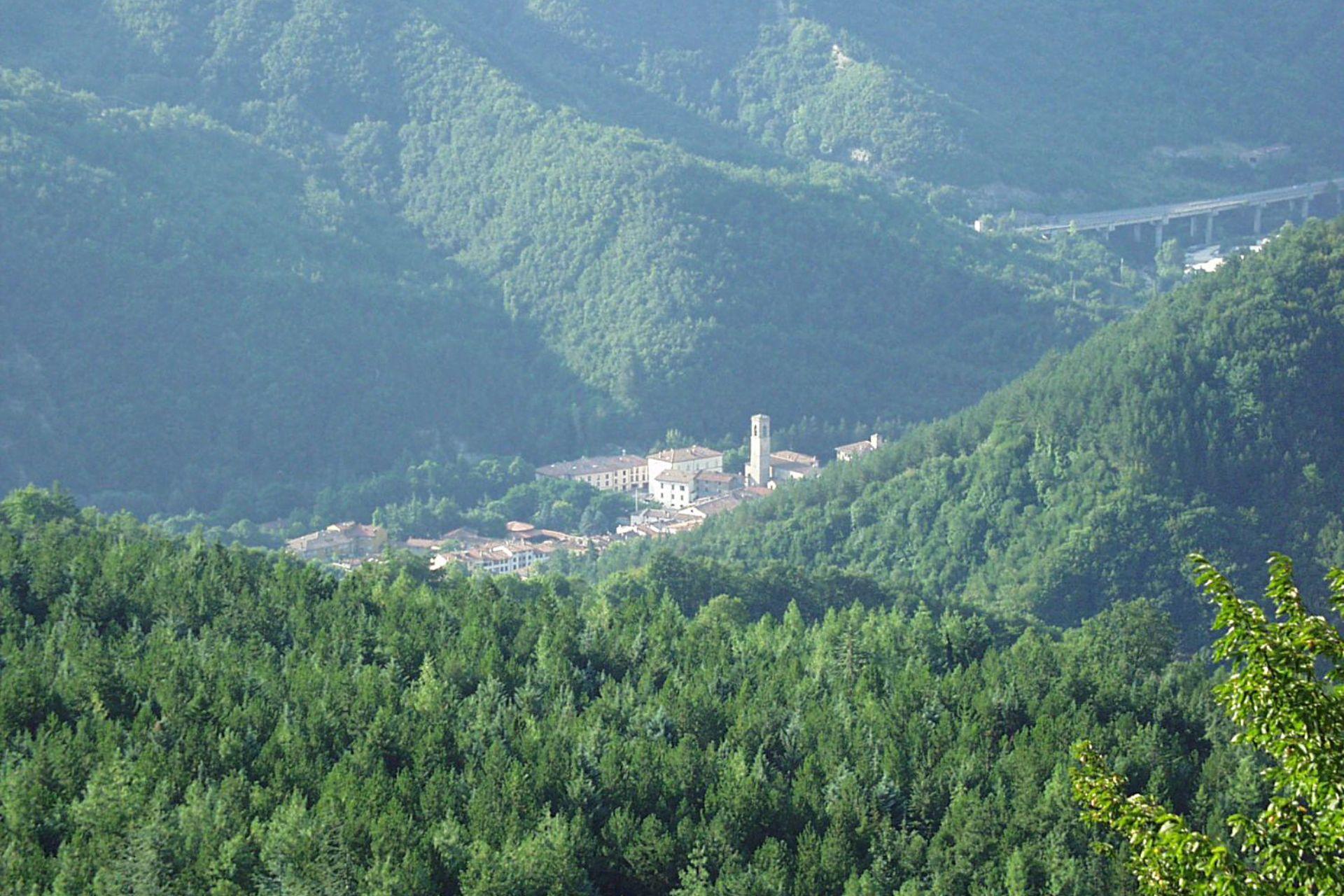The Lunêri of Smembar is a famous calendar-moon of the Romagna tradition, published continuously since 1845. It is published every year on 11 November, St Martin's Day.
The calendar, printed on a large 50 x 70 cm sheet to hang on the wall, consists of two sections:
- One zirudëla, a tribute to the year just gone, written entirely in Romagnolo dialect and accompanied by eight satirical cartoons.
- The calendar lunarium proper, which includes information on the main religious holidays, Romagna saints, sunrise and sunset times, weather forecasts for each month and sowing suggestions.
The origin of this lunarium is linked to the belief that the phases of the moon influence agricultural activities. To plan their activities, farmers in Romagna consulted the calendar to find out the beginning and end of the different phases of the moon. Even today, this lunar calendar is a valuable reference for those who work the land, helping them decide when to decant the wine or sow the vegetable garden.
The Lunêri of Smembar was born on New Year's Eve between 1844 and 1845, when a group of friends gathered at the historic *Ustareja dla Marianaza* (the Osteria della Mariannaccia, still active) in the centre of Faenza. Among them were the painter Romolo Liverani, engraver Achille Calzi and poet Angelo Tartagni.
The first issue of the lunarium already contained the features that would remain unchanged: the eclipse, the religious festivities, the equinoxes, and the monthly vegetable garden tips. The ideal dates for getting married, as from 7 January to 4 February and from 31 March to 29 November. The *zirudëla* was, and remains, the heart of the lunarium: a satirical section describing the year just ended, with the unmistakable humour of Romagna.





